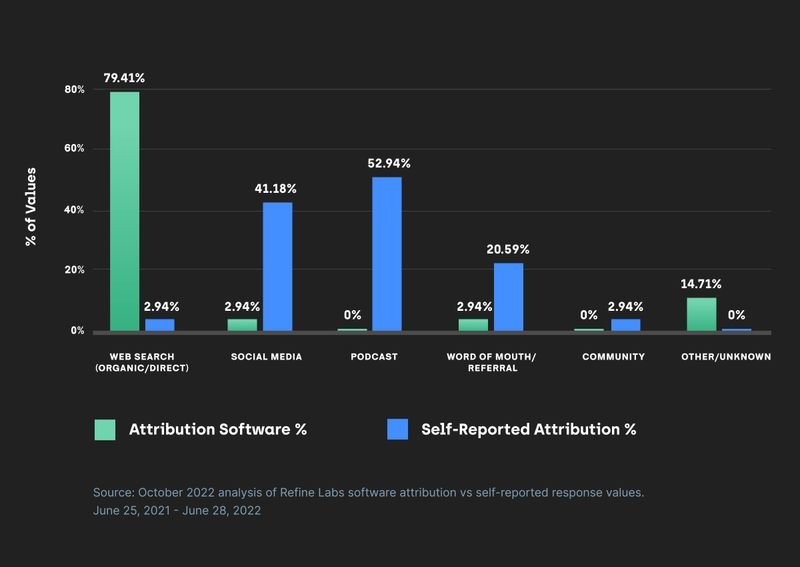Tap Into the Power of Dark Social
You probably get a billion (give or take) emails a day.
You go about your day, ignoring all the ones with links to blogs that you don’t possibly have time to read. But then your good friend shoots you an email: you gotta read this, they say. So you do. Maybe it’s so good, you DM it to someone else. There’s a term for this: dark social. It refers to the sharing of content through private channels that are difficult to track such as private messaging, email, podcasts, community discussions, and other methods that don't leave a public trail. It also refers to the people who are reading your content in the shadows. While this type of skulking and sharing may seem innocuous, it’s a powerful force that can greatly affect the reach and impact of your content. You can’t always see your fans even though they are there.
Why is dark social powerful?
I was at an event in Newport the other day and several women individually approached me… introducing themselves, telling me that they’ve followed me on LinkedIn for months or years, that they’ve applied my sales / marketing advice and are experiencing success… introducing me to others at the event. I didn’t recognize a single one of these women. Why? They’re what I refer to as shadow fans. They follow me, even take my advice, share my posts, refer me to others, all without engaging with me on LinkedIn.
Samantha McKenna (Sales & LinkedIn expert) says, “It doesn’t matter if your buyers aren’t on LinkedIn. If your content is good, it’ll be shared with others who will navigate here, it’ll create brand awareness for your teams and company, and will lead to an increase in site traffic or direct DMs to work with your teams.”
Your social media vanity metrics may not represent the power of your content but it’s feeding your brand awareness and credibility.
Dark social is powerful because:
It’s a much more specific, targeted type of sharing.
It comes with an unspoken endorsement when a trustworthy source shares it.
It leads to higher engagement.
It creates more meaningful interactions that can build relationships and drive sales.
It increases the visibility of your brand and helps you reach new audiences.
How to encourage dark social activity
Implement social sharing buttons on your website to let visitors easily share your content through social networks. While this won't capture dark social, it will increase the overall reach of your content.
Remember that comments are currency. When you engage with your audience and they engage back on a social post, you increase its reach, ultimately boosting more opportunities for dark social activity.
You can also simply ask your audience to share. Sometimes just a reminder that you want them to share with a friend or colleague goes a long way.
How do you know it’s working if there’s no trail?
You can’t accurately capture dark social via attribution software because the software only sees the final way a lead makes it to you. If you get an email from a friend about a brand and you later google the brand, attribution software is going to tell you they found you via web search. But that’s not really how they found you.
A study by Refine Labs, which conducts revenue R&D for B2B companies, concluded there was a giant gap in what software-based attribution claims vs. what first-party customer-led data shows. Example: In their collected data set, 0% of revenue was attributed to Podcast by software-based attribution but 53% of it was attributed to Podcast by self-reported attribution. *gasp!* That’s a huge gap!
So how do you collect the data? We leaned on the expertise of Refine Labs CEO/Founder, Chris Walker, for this one. With well over 100K followers on LinkedIn, Chris caught my attention on the topic and I learned from him how to capture what portion of your traffic is due to dark social. The answer is super tech savvy, the biggest tech hack of the day. Are you ready for it?
You ask.
Literally you just ask “how did you hear about us” any time you talk to a new lead. Ask the question on every single one of your website forms as well. Don’t make it a select list; make it an open text box, where they can type in anything, and make it mandatory for the question to be answered before the form can be submitted
You’ll be surprised how different your attribution will look.
Next steps
I shared some tactics to encourage dark social above but at the end of the day, you can’t force it to happen. The best way to ensure your content gets shared is by telling interesting stories and creating valuable content. The kind that people can’t help but share.
Already doing that? Awesome. Here’s a recap on what’s next:
Implement social sharing buttons on your website
Engage with your audience / ask them to share your content
Ask your leads where they found you
Add text fields to your forms asking how they found you
Analyze the self-reported data to determine where to put your marketing dollars

